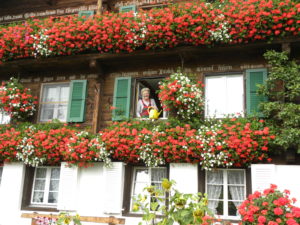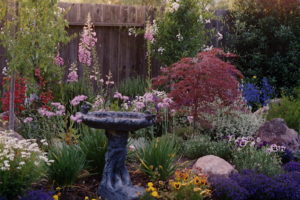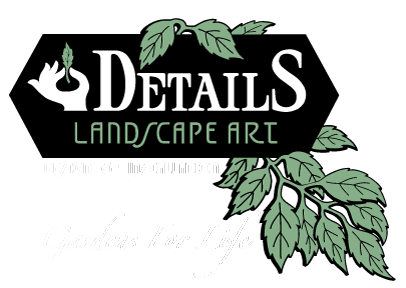Annuals are plants that complete their entire life cycle in less than one year. Details Landscape Art is a design-build landscape contractor in Petaluma and the surrounding areas of Sonoma County.
Generally we build gardens for clients that include primarily shrubs, trees, groundcovers, vines and perennials. Our tag line, ‘Gardens for Life’, indicates that we try to install a permanent garden that will last a lifetime, but we are occasionally called upon to add splashes of seasonal color, beyond those provided by flowering shrubs and perennials. Although our planting philosophy promises to mix heights, textures and bloom seasons, there may be occasions where customers want some instant quick color or special areas where they can ‘play’, and change out flowers annuals every few months.
So annuals germinate, flower, set seed and die within one year – as opposed to biennials which take two years to complete the life cycle, and perennials that take two or more years. The distinction between these, however, is dependent on the hardiness of the plant itself, and the particular climate. Salvias, for example, are repeat bloomers year after year here in Northern California, while in cold winter climates are treated as annuals.
They may be divided into two groups: Cool-season annuals and Warm-season annuals: Our favorite Cool-season annuals are iberis, some types of chrysanthemum, some types of dianthus and primula (primrose). This group of hardy annuals does well in cool soils and mild temperatures and can stand mild frosts. They must develop their roots and leaves in cold weather. In the cold northeast U.S. they can be planted in early spring. In Northern California where we have milder winters, plant them in the fall for a winter show of color and in early spring. One of our favorite selections for winter color is cyclamen. Technically perennials from tubers, we treat them as annuals in winter. They are readily available in local nurseries and are a great source of shade color after impatiens have died.
Warm season annuals thrive in the warmer weather of spring, summer and fall, and may be frost tender in winter climates. Our favorites are impatiens for shade, verbena, lobelia, scabiosa, helianthemum, cineraria and sweet alyssum.
As with any plant in the garden, planting annuals should begin with preparing the soil, so that it is fluffy, easy for roots to grow in, and full of nutrients. Generally we buy small plants at the nursery, either in six-packs, 4 inch pots or in one gallon containers. These plants are readily available and already have a nice head start with a root system. Usually, these small plants will have at least SOME flowering, so the gardener can see the colors being bought and planted.
Plants need their soil to be consistently moist, but not drowned. A good mulch or bark will help the plant retain water, and retard the growth of seeds. Deadheading faded blooms will encourage the growth of new flowers, and keep the plant looking neater.
Don’t hesitate to use annuals for a splash of color in the garden!
